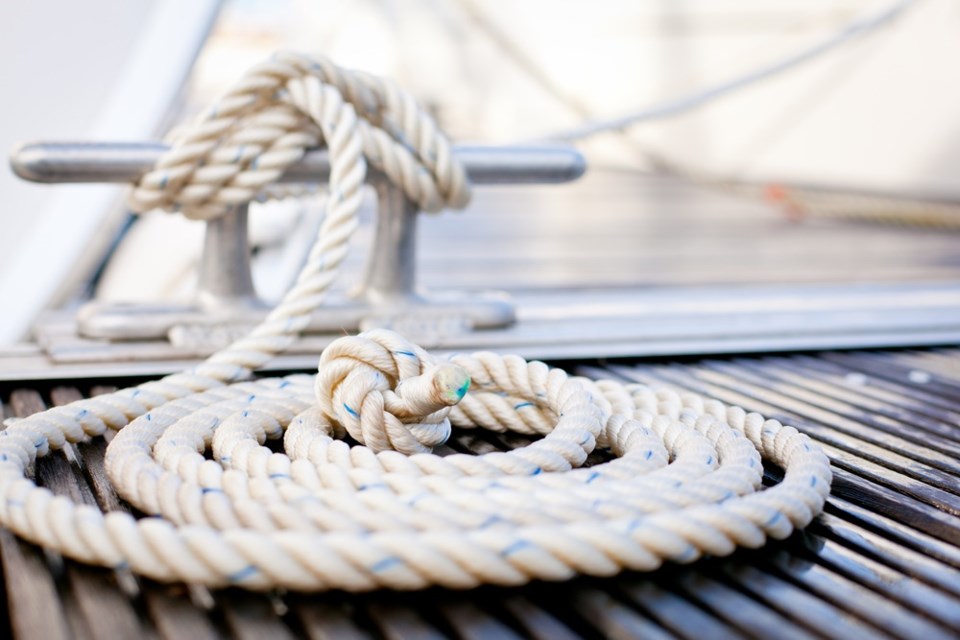NEWS RELEASE
U.S. CUSTOMS AND BORDER PROTECTION
*************************
SAULT STE MARIE, MICH - U.S. Customs and Border Protection (CBP) Field Operations is installing the Reporting Offsite Arrival-Mobile (ROAM) application for small boat reporting at four sites in the Sault Ste. Marie, Mich. area of responsibility and smartphones with the app will be able to complete their inspection with a CBP officer remotely within the Eastern Upper Peninsula and Northern Lower Michigan (certain restrictions may apply).
A new ROAM iPad reporting site at the Rogers City Marina has been added in addition to the iPads located at Detour Village, Drummond Island Yacht Haven, and Mackinac Island. The iPads allow boaters to report their arrival and communicate with CBP officers to enter or return to the United States.
With the new ROAM application, boaters will no longer be constrained by reporting hours at different marina’s and sites, however, if it is determined that an in-person inspection will need to be conducted, boaters may have to wait for officers to arrive from Sault Ste. Marie, Mich. Port of Entry or be directed to George Kemp Marina for an in-person inspection.
If you want to arrive at a place other than the four iPad locations you can download the ROAM application from the Android and Apple store.
Once installed on your phone or tablet it will enable you to report your arrival and conduct video conferencing with officers at the Sault Ste. Marie, Michigan Port of Entry. Having your own ROAM account will save you the burden of reentering your personal and vessel information at each entry.
For more information on ROAM please go to https://www.cbp.gov/travel/pleasure-boats-private-flyers/pleasure-boat-overview/roam.
Boaters entering the United States with NEXUS cards and form I-68 can enter virtually anywhere and anytime without a face to face inspection, provided that all on board have NEXUS and/or I-68 cards. Entry through these Trusted Traveler Programs only requires a phone call to the Sault Ste. Marie, Michigan port of entry at the time you enter the U.S.
Please note that NEXUS boaters may be instructed to report to an authorized reporting station for inspection based on the needs of CBP Field Operations. To report in using NEXUS, call (906) 632-8822, for NEXUS toll-free information (U.S. and Canada) call 1-866-NEXUS 26 (1-866-639-8726).
The only authorized in-person reporting site in the Eastern Upper Peninsula is located in Sault Ste. Marie at George Kemp Marina. To have an in-person inspection at George Kemp Marina call the Sault Ste. Marie, Michigan Port of Entry at (906) 632-8822.
U.S. citizens and nonimmigrant aliens from Canada entering the United States by land or sea are required to present a valid WHTI-compliant document, which include:
- Passports
- U.S. Passport Cards
- Enhanced Driver's Licenses
- Trusted Traveler Cards (NEXUS, Global Entry, SENTRI, or FAST)
- Military Identification Cards (for members of the U.S. armed forces on official orders)
- U.S. Merchant Mariner Document (for U.S. citizens on official maritime business)
Children: U.S. and Canadian citizen children under age 16 arriving by land or sea from a contiguous territory may present an original or copy of his or her birth certificate, a Consular Report of Birth Abroad, a Naturalization Certificate, or a Canadian Citizenship Card.
Groups of Children: U.S. and Canadian citizen children under age 19 arriving by land or sea from contiguous territory and traveling with a school group, religious group, social or cultural organization, or sports team, may also present an original or copy of his or her birth certificate, a Consular Report of Birth Abroad, a Naturalization Certificate or a Canadian Citizenship Card.
Native Americans: Native American Indians born in the United States or Canada may continue to present their current tribal documents, including the current Indian and Northern Affairs Canada (INAC) card, as proof of identity and citizenship when entering by land or sea, provided the document is affixed with a photo.
*************************
